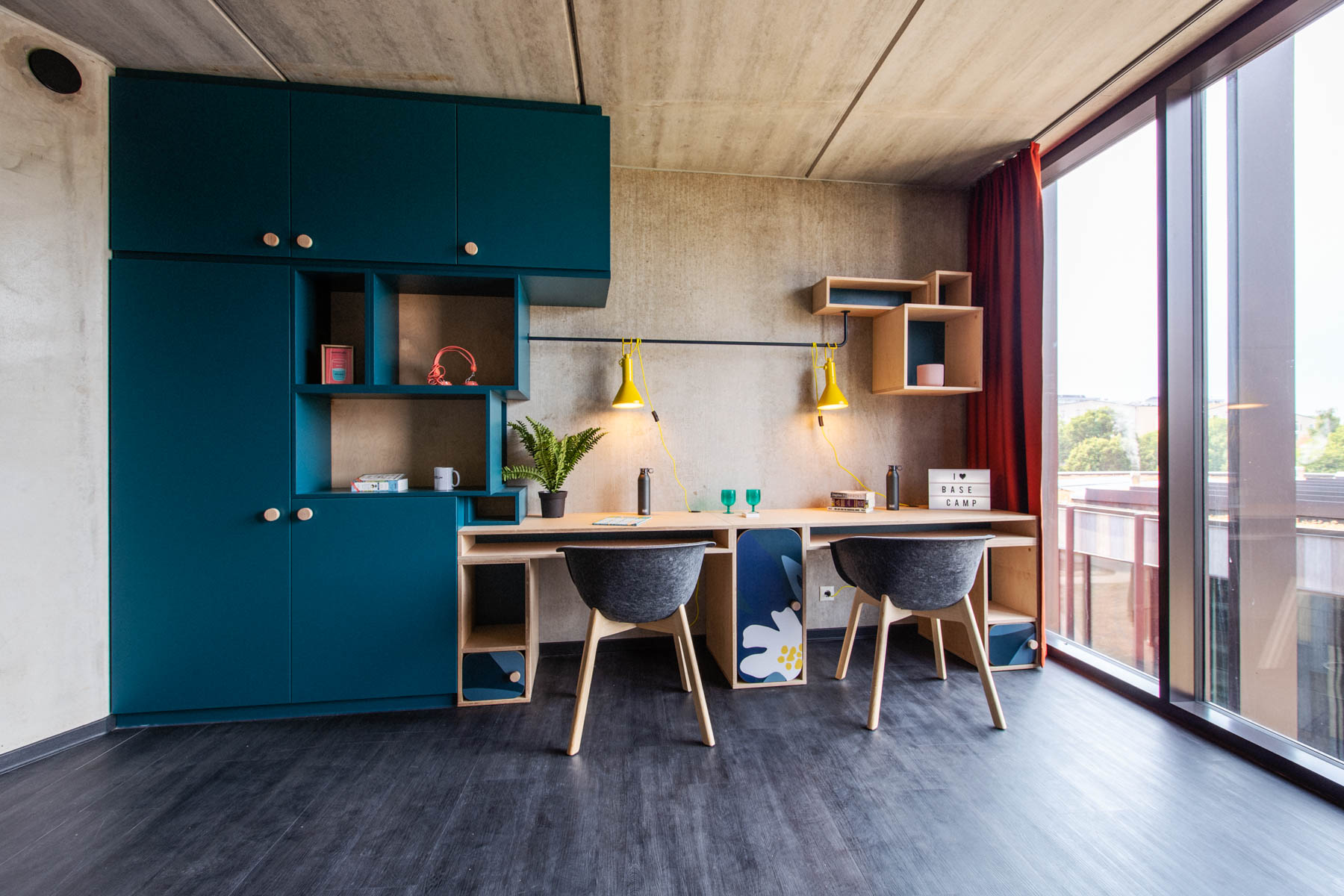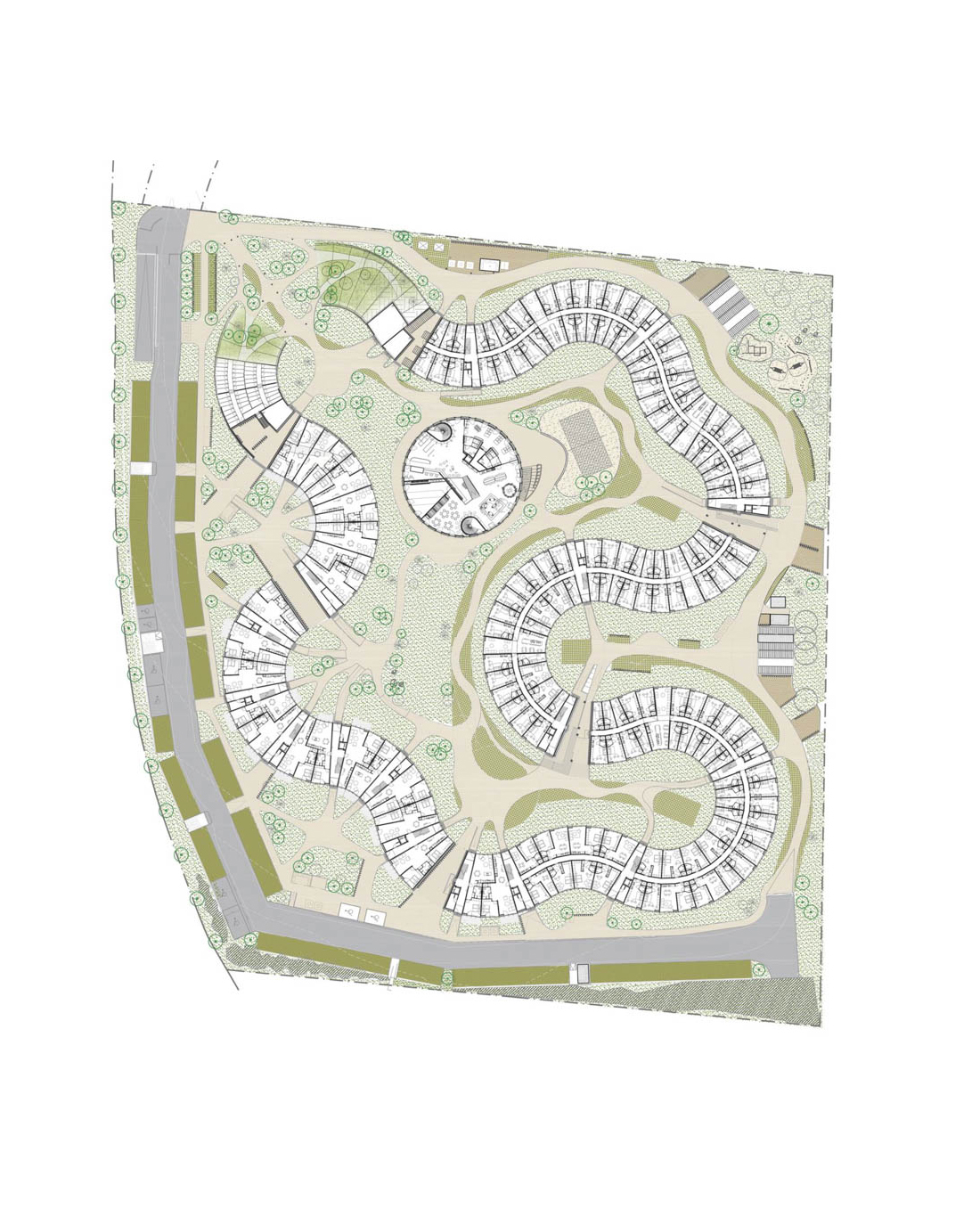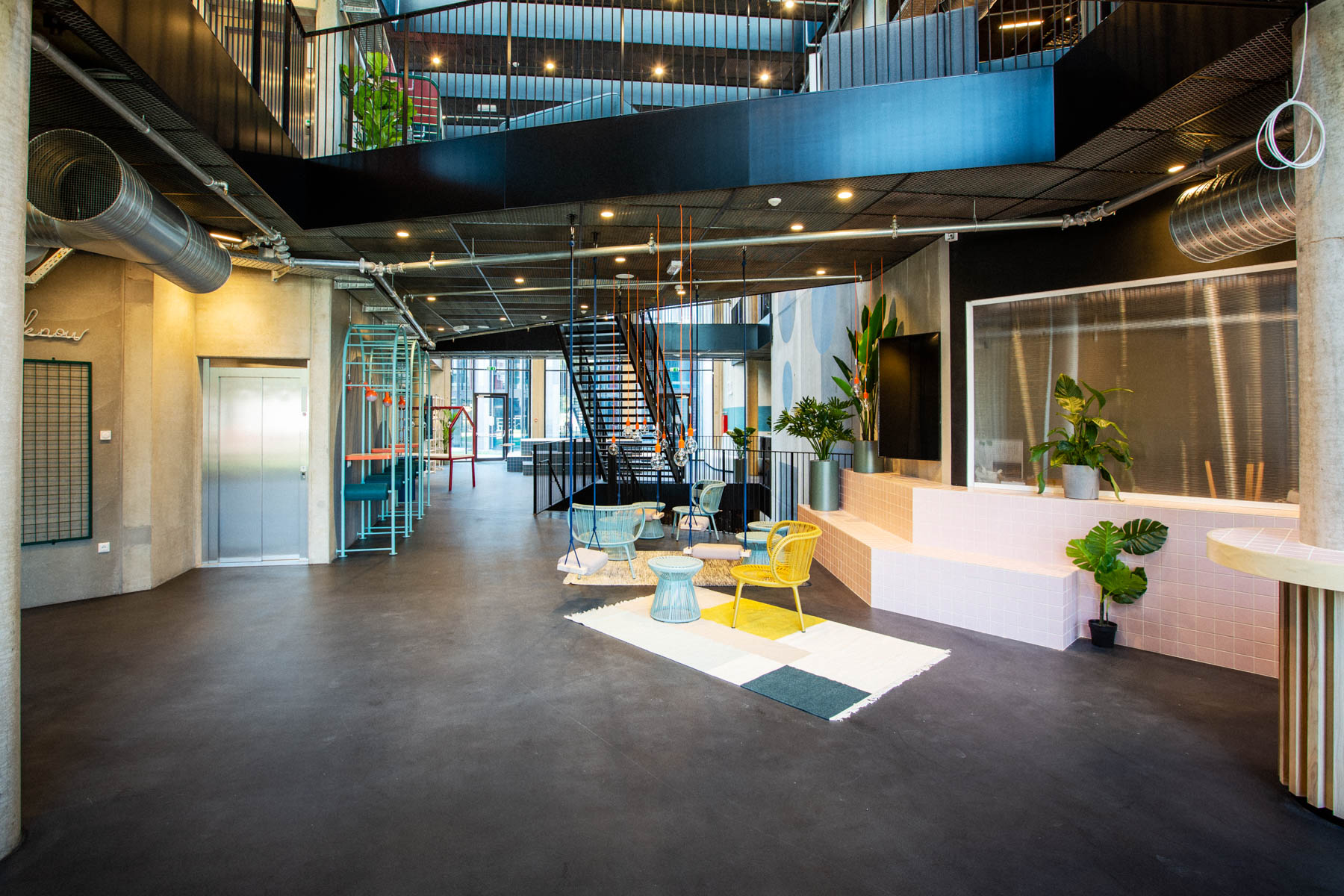| In partnership with |  |
BaseCamp takes over the majority of the new cohousing property, Skovbrynet Lyngby, to introduce foreign residents to Danish living in a way that’s inclusive, all while encouraging social responsibility.
We’re taking a look at the social design of Skovnrynet Lyngby, which continues in Denmark’s cohousing past:
The latest addition to the BaseCamp family opened this year in August in the cohousing property, Skovnrynet Lyngby. The whole development is a total of 41,150 sq m, 26,000 sqm of which is green – including 8,100 sq m on the building’s 700m-long roof running track. The round-shaped property is comprised of BaseCamp student properties, corporate apartments, and senior housing, with a shared green-space at its center, plus communal facilities such as a café, a gym, workshops, a cinema, and a library.
 |  |
 | |
This design, which puts an emphasis on communal spaces, follows in Denmark’s radical past, which saw the country establish co-housing in the 1960s. Cohousing is defined as an intentional community of private homes clustered around a shared space. The modern theory originated among groups of families who were dissatisfied with existing housing and communities that they felt did not meet their needs.
Danish architecture has also historically put an emphasis on communal living, creating housing complexes that circle a shared courtyard to encourage neighborly fraternity. Although cohousing exists outside of Denmark, its prolific reach in the Scandinavian country has resulted in structures like Andelsbolig and world-famous communes like Freetown Christiania.
Cohousing is as much a part of Danish culture as smørrebrød and snaps.
Equally, student housing is common around the world, though few have taken it to the same scale as BaseCamp, which has created an environment where community extends beyond classmates.
 | |
 |  |
Students have complete privacy where needed, as even the most basic room on offer has its own bathroom. Instead, BaseCamp has tried to create inviting communal spaces for students to share to encourage friendship and community, like kitchens, a gym, a gaming room, and common rooms. There’s also BaseLife, a resident life program that’s managed by a community manager. Within this program, students can be hired as BaseBuddies – a paid role that allows them to become a pillar of their own community, facilitating others’ positive experiences and bridging the gap between BaseCamp residents and BaseCamp management.
 | |
 |
Students also have access to the building’s shared green spaces – as do its corporate and senior residents. This gives students the opportunity to act as members of a society on a microcosmic scale and introduces many foreign residents to a Danish way of life.
This level of coexistence with a diverse population within a student property will give many young adults the tools required to flourish when they move out, as the building’s communal design encourages social responsibility, while BaseCamp’s commitment to care means the stress of living away from home won’t distract from their studies.
Find out more about BaseCamp.
 |

